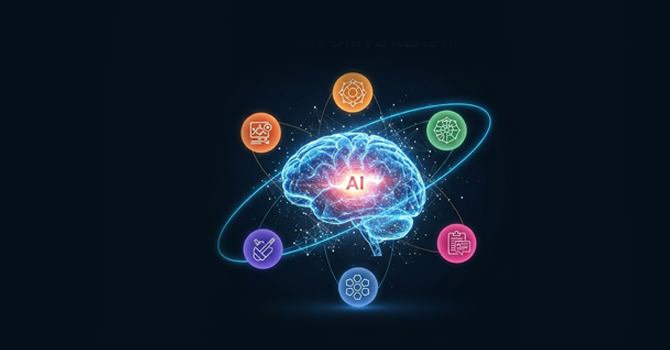A Financial Times analysis of S&P 500 filings found that 374 companies mentioned AI in their earnings calls last year, most in glowing terms. Yet when asked to explain the benefits, leaders often offered only vague promises of “productivity gains.” Their reports detailed risks more clearly than tangible results.
The truth is that the failure to capture AI’s value is rarely about the technology itself. It’s about leadership and organizational alignment. Many companies install AI tools without adapting their processes, culture, or decision-making structures. Technology alone doesn’t drive transformation; people do.
Why AI Efforts Fall Short
AI can revolutionize productivity, but only when organizations change how they work. Too often, teams continue using old workflows, expecting new tools to solve problems. Without redesigning systems and roles, companies end up adding complexity instead of efficiency.
Five Leadership Competencies for the AI Era
1. Span Organizational Boundaries
Executives must look beyond their own companies and industries to understand AI’s full potential. Building relationships with technologists, startups, and regulators helps leaders see where AI is heading.
For example, Microsoft’s Satya Nadella invited founders from its acquired startups to executive strategy meetings, exposing leadership to diverse ideas and fostering innovation. Leaders who engage across boundaries gain the confidence to apply AI insights effectively.
2. Redesign Organizations
AI creates value when processes, incentives, and roles are redesigned around it. Leaders must decide which tasks to automate, where to enhance human judgment, and how to balance efficiency with creativity.
At SAP, CFO Dominik Asam integrated AI into finance operations to automate routine tasks and reallocate resources toward high-value work. The result was a structural redesign that unlocked real productivity gains.
3. Orchestrate Team Collaboration
The best results emerge when humans and AI collaborate intelligently. Amazon, for instance, uses generative AI for tax analysis, forecasting, and decision support, allowing executives to debate trade-offs using richer data.
Leaders must treat AI not as a static tool but as a teammate whose role, including advisor, analyzer, or challenger, can be designed to improve decision quality. This requires creating psychological safety so teams can question outcomes and learn together.
4. Coach and Develop Talent
Successful AI adoption depends on people, not just systems. Leaders must create a learning culture that encourages experimentation and skill development.
At Microsoft, Jean-Philippe Courtois replaced an “inspection culture” with a coaching approach, supported by digital dashboards and real-time feedback. This shift freed thousands of hours for customer engagement and innovation.
Leaders must now act as coaches, helping employees build complementary skills that enhance, not compete with, AI capabilities.
5. Lead by Example
AI leadership begins with personal use. Walmart’s Chief People Officer, Donna Morris, uses AI tools for both professional and personal tasks, signaling that experimentation is encouraged.
Yet many executives who speak about AI’s promise use it less than their employees. To lead authentically, executives must explore AI themselves and understand its power and limits. Using AI daily fosters credibility, curiosity, and the kind of agility that inspires others to follow.
The Human Edge in the AI Era
AI can amplify business results, but only if leaders evolve. The organizations that succeed will be those whose leaders bridge boundaries, redesign work, foster collaboration, coach their teams, and model the behavior they expect.
In the end, the real value of AI is in the leaders who know how to unlock their power.
- The New Dr. Google is in: Here’s How to Use it Wisely - October 15, 2025
- Leadership in the AI Era: 5 Skills That Drive Real Impact - October 8, 2025
- Amazon’s Agentic AI: Transforming the Seller Experience - September 18, 2025




